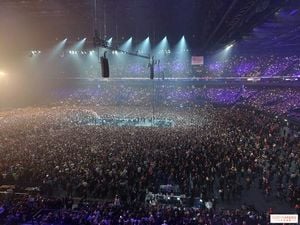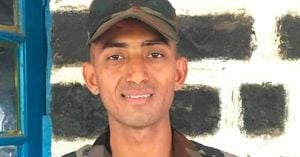VATICAN CITY -- The conclave to elect the 267th pope and successor to Pope Francis is currently underway, with 133 cardinals participating in the voting process. This conclave marks a historic moment, as it features the largest number of electors ever, with 108 of them appointed by the late Pope Francis himself. Among the cardinals, ten hail from the United States.
As the voting commenced, all cardinals took an oath of secrecy, committing to confidentiality as they engage in daily voting sessions, which occur twice in the morning and twice in the evening. The voting will persist until a two-thirds majority is achieved, leading to the election of a new pope. Following each voting session, the ballots are burned, and the smoke that emerges from the chimney atop the Sistine Chapel serves as the only public indication of the conclave's progress. Black smoke signifies that no consensus has been reached, while white smoke will announce the confirmation of a new holy leader for the Roman Catholic Church.
On the evening of May 7, black smoke billowed from the chimney, indicating that the 133 cardinals had not yet managed to reach the required two-thirds majority to elect a new leader. This marks the first day of voting, with expectations for additional rounds to take place on May 8. The public eagerly awaits the moment when white smoke will signal the election of a successor to Pope Francis, who passed away last month at the age of 88.
The conclave commenced with a solemn mass in St. Peter's Basilica, where senior cardinal Giovanni Battista Re led prayers, asking for divine guidance in selecting “the Pope our time needs.” In his homily, Re emphasized the importance of this moment, stating, “Let us pray, then, that the Holy Spirit, who in the last hundred years has given us a series of truly holy and great pontiffs, will give us a new pope according to God’s heart for the good of the Church and of humanity.”
As the conclave enters its second day, the cardinals will reconvene at the Sistine Chapel after attending mass in the Pauline Chapel. The assembly is expected to engage in intensive discussions, with hopes of reaching a decision quickly. Some cardinals have indicated that they aim to conclude the voting by Thursday or Friday, demonstrating a desire for unity following the often divisive 12-year papacy of Francis.
Among the frontrunners to succeed Pope Francis are Cardinal Pietro Parolin and Cardinal Luis Antonio Tagle. Parolin, who has served as the Vatican’s Secretary of State for the past 12 years, is a well-known figure among the electors, having established connections with cardinals worldwide. At 70 years old, he is regarded as a steady administrator capable of bringing calm to the papacy after a tumultuous period. Reports suggest that he might already have the support of around 50 cardinals ahead of the upcoming voting sessions.
Another potential candidate is Pierbattista Pizzaballa, the Patriarch of Jerusalem. At 60 years old, Pizzaballa is seen as a younger alternative and has garnered attention due to his diplomatic skills and leadership role within the Catholic community in the Holy Land. His selection could signify a significant geopolitical statement, particularly given the Church’s critical stance towards certain political figures in Israel.
As the conclave progresses, the cardinals are not only tasked with electing a new pope but also face the challenge of addressing pressing issues within the Church. The new leader will need to navigate the expectations of Catholic women, who have long sought greater recognition and roles within the institution. Under Pope Francis, strides were made to promote women to leadership positions, and the successor will have to decide whether to continue this legacy or shift course.
With the conclave set to resume voting today, the eyes of the world remain fixated on the Vatican. The anticipation builds as the faithful gather in St. Peter’s Square, awaiting the moment when smoke signals the election of a new pope. The coming days will undoubtedly be pivotal in shaping the future direction of the Catholic Church, as the cardinals deliberate on the qualities and vision needed for their next leader.



